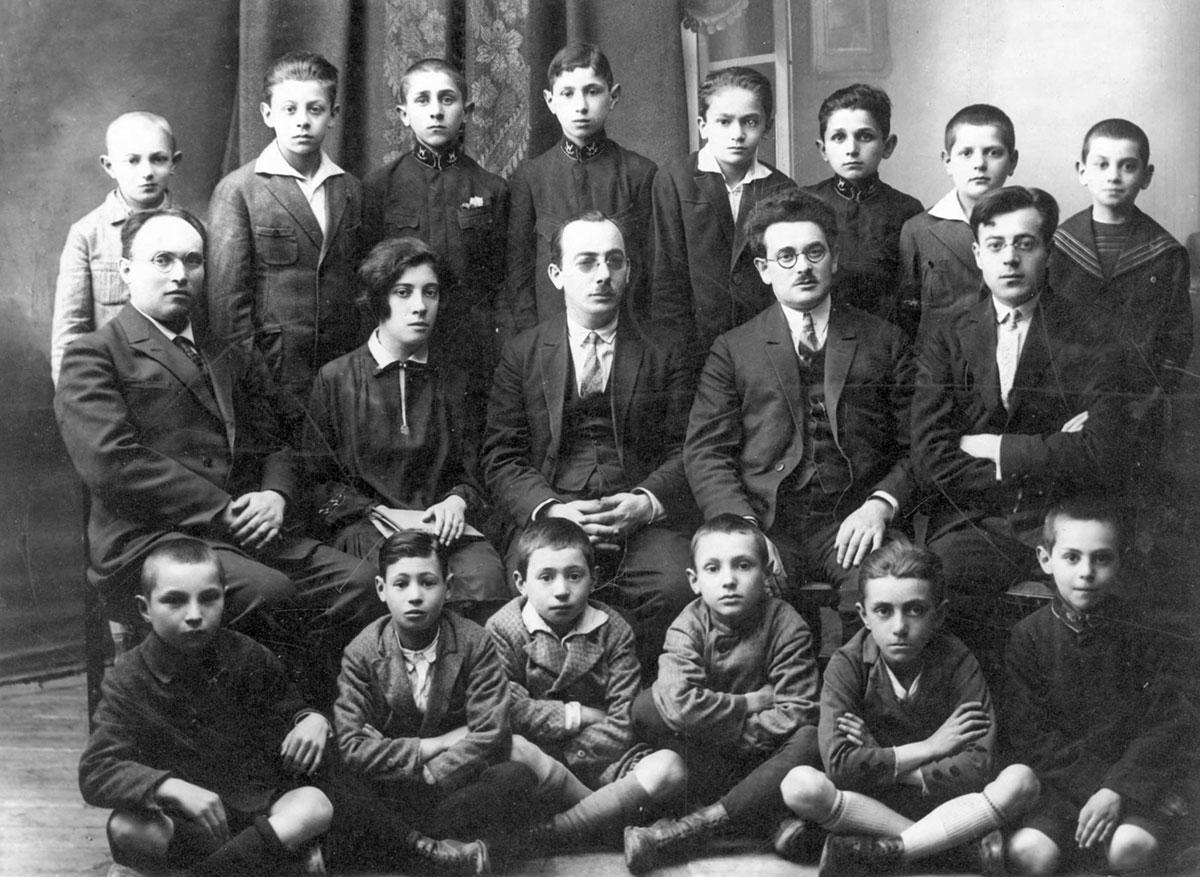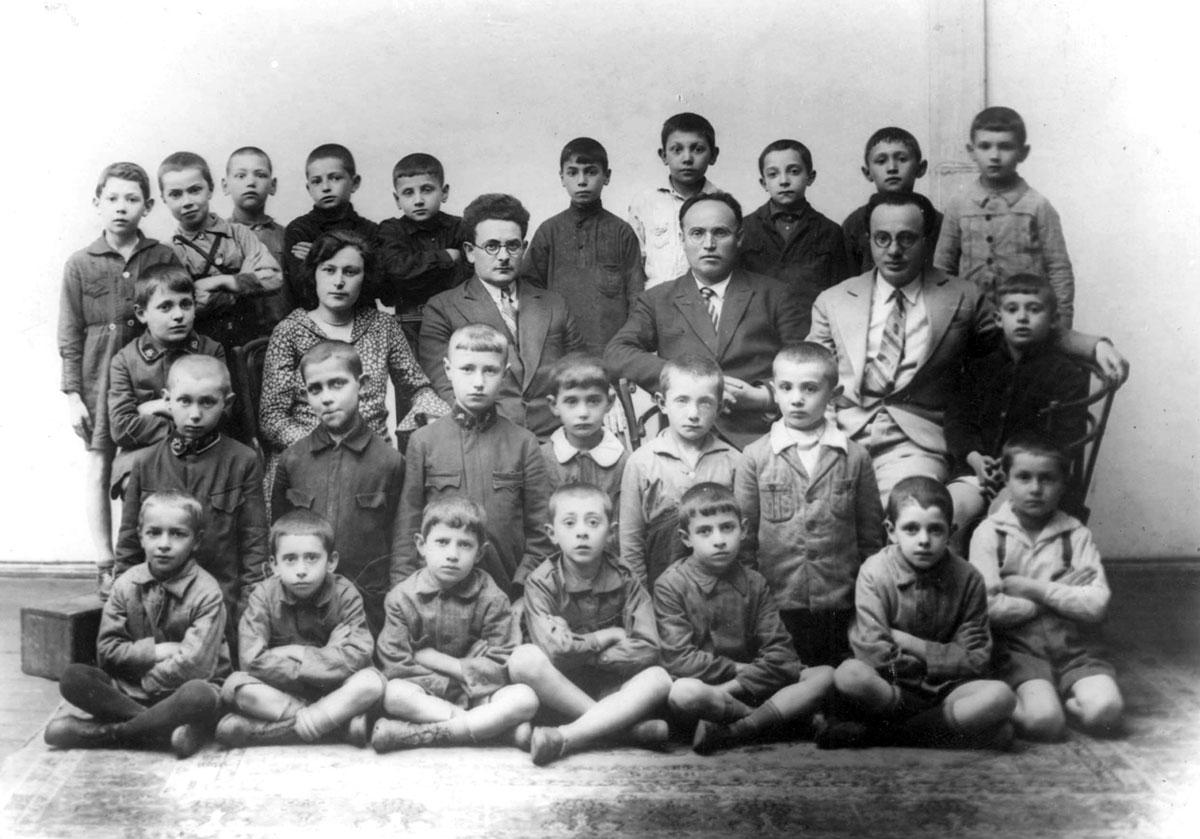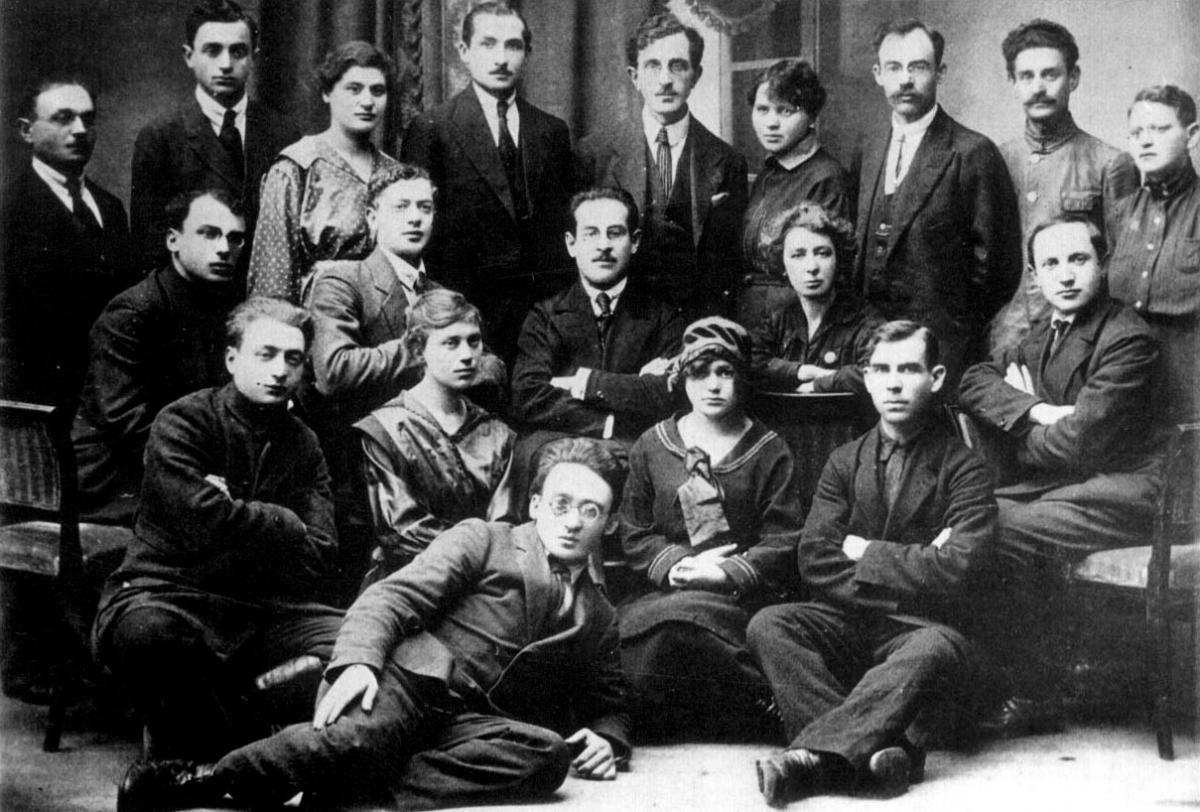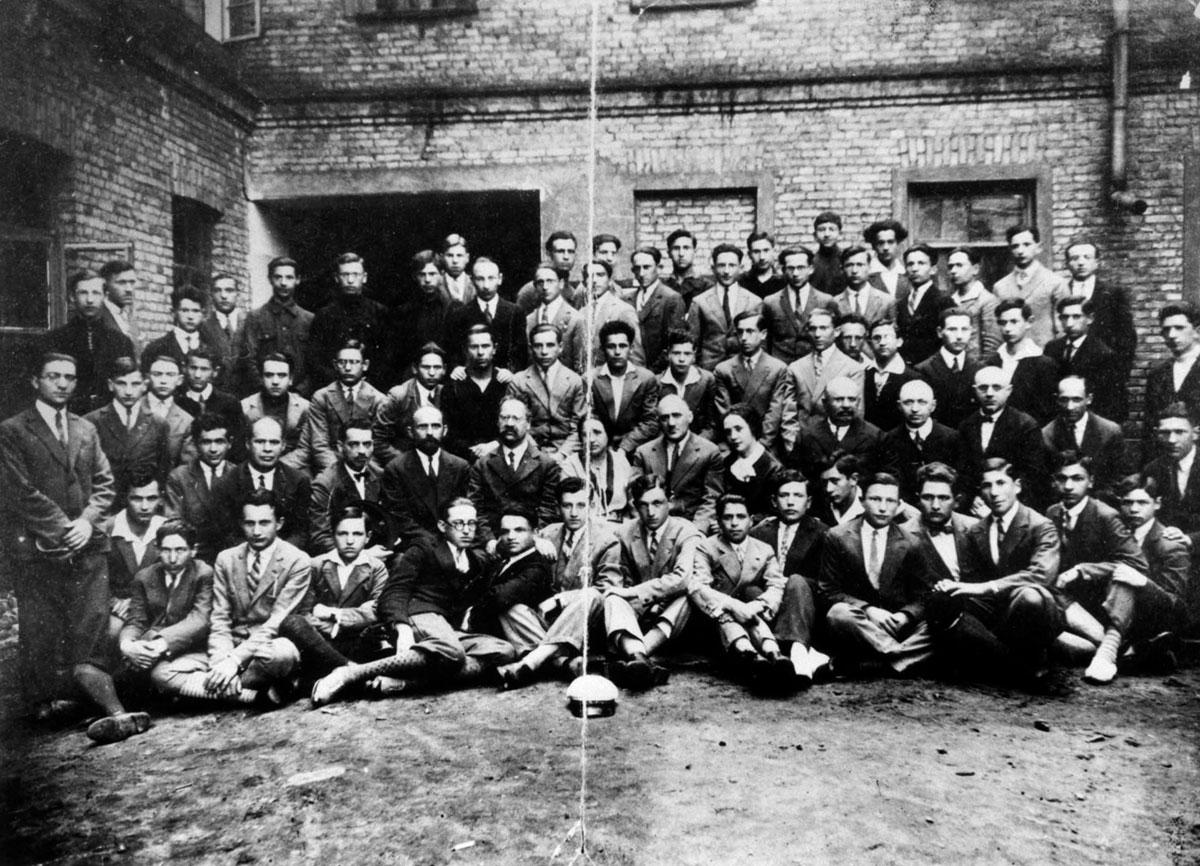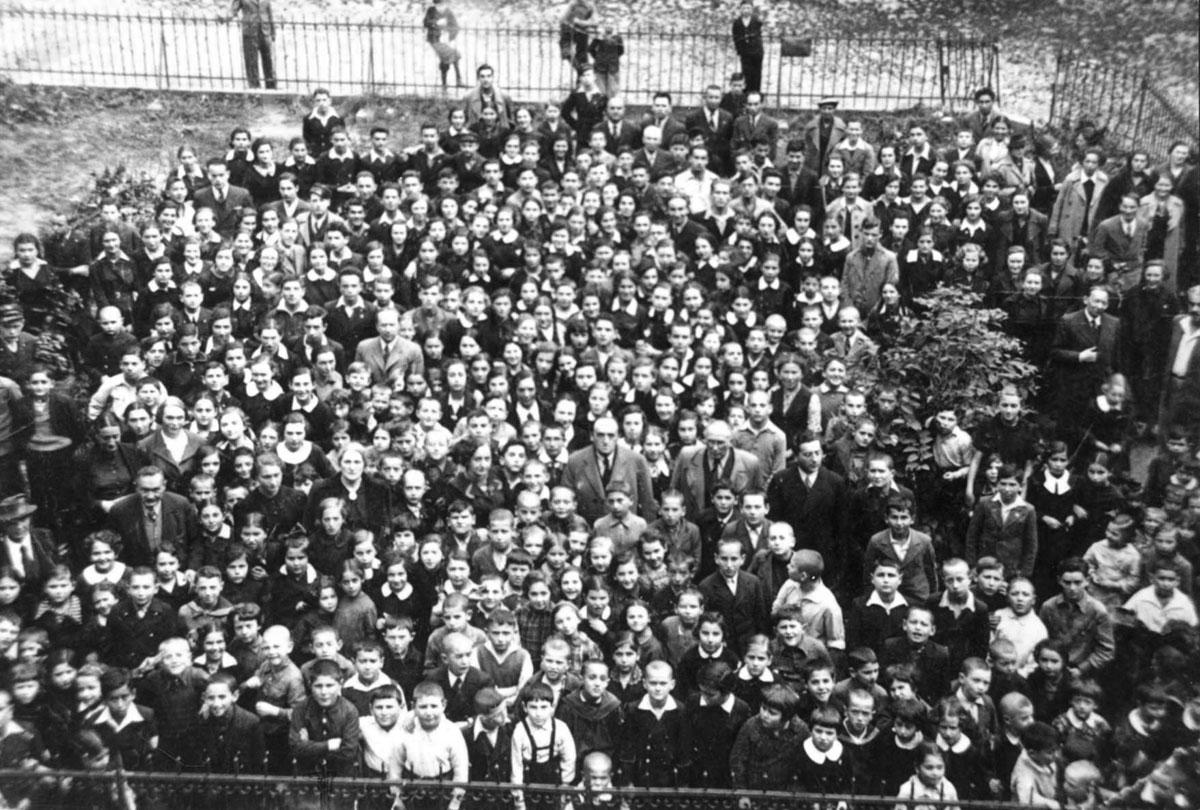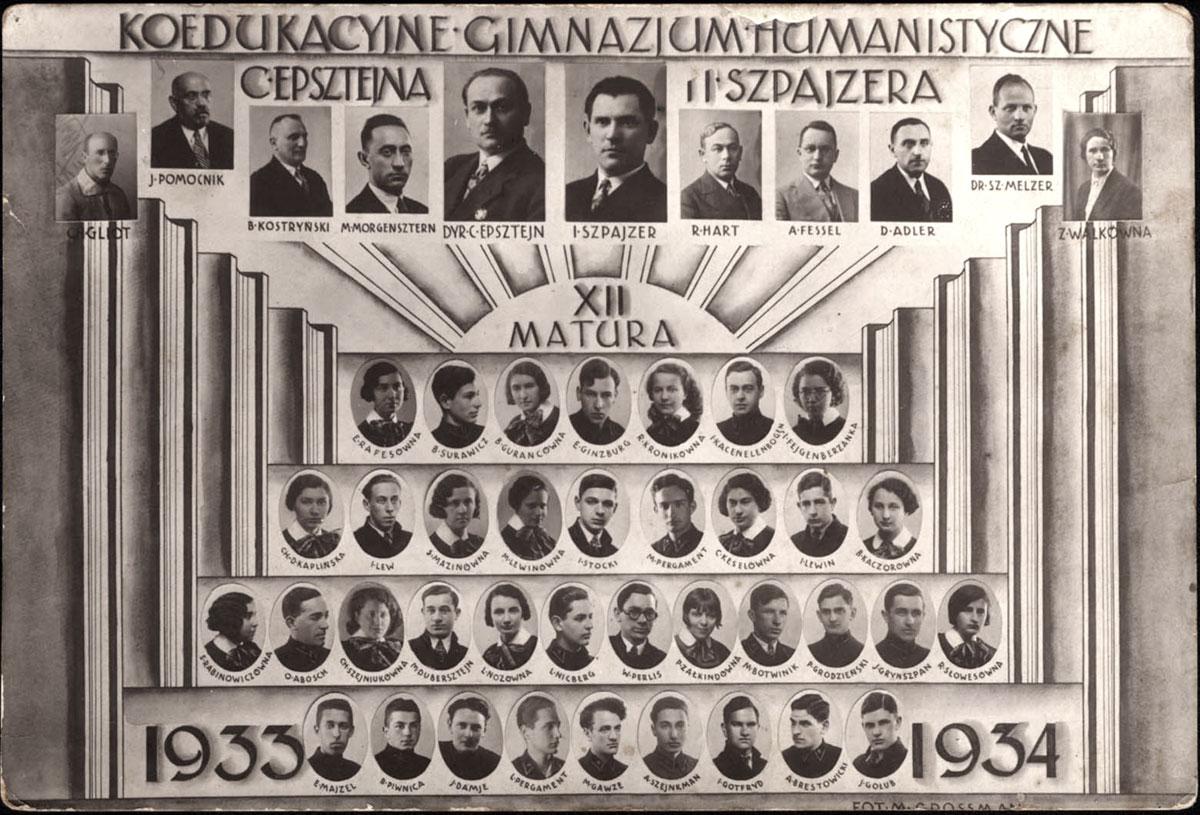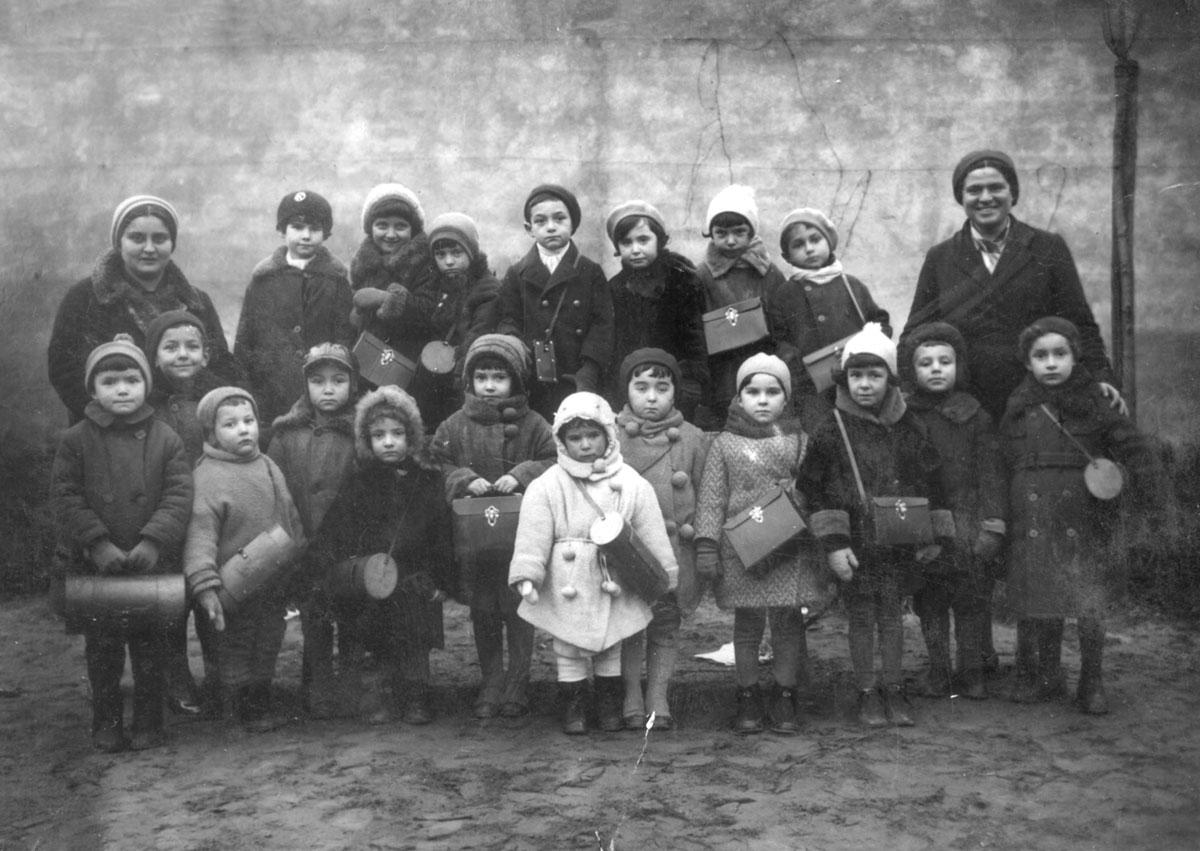To encourage the Jews to study Polish, the authorities opened "Shabbatovkos" – local government schools for the Jewish population that were closed on Saturdays and that included in their syllabus Jewish and religious studies in Polish. While Jewish notables worried that these schools, which they nicknamed "matriculation stores," would distance the children from their Judaism, 6,000 Jewish children enrolled into the schools.
Five Jewish education networks operated in Vilna:
The Central Education Committee (Tsentraler Bildung Komitet – ZBK) set about taking charge of secular education in Yiddish, in response to the expansion of education in foreign languages. The Committee ran kindergartens, five schools and a practical gymnasium in which Yiddish was taught. At the end of the 1930s, the gymnasium won government recognition, allowing the matriculation examinations to take place in Yiddish and for its graduates to study at the University. The Education Committee published text books, maps, two magazines – one for children and the other for youth and adults – and pedagogical booklets.
At the end of the 1920s, a Zionist-Yiddish educational network – the "Schul Kult" – was established that ran a Yiddish school. Some 2,000 students learned in the Yiddish school.
The "Tarbut" Zionist-Hebrew educational network began its activities in Vilna in 1925. The network ran kindergartens, primary schools, a gymnasium specializing in the physical sciences (that closed in 1931) and a Hebrew training college for kindergarten teachers – the only one of its kind in Poland. It also published popular science booklets for young people.
The united committee's "Tachkamoni" educational network included 11 schools, a private religious gymnasium and teacher training courses. The municipal Talmud Torah (religious school), a school with six departments, had some 300 students – half of them children from the orphanage. They were exempt from school fees, and received free meals and schoolbooks. The network's institutions taught some 1,500 children all together.
The "Horev" ("Yavneh") centre ran a primary school and supported some 20 yeshivot and 200 heders (Torah school for young children) in Vilna and its surroundings – in which approximately 1,400 students learned.
In 1924, the Association for Yiddish Culture ("Vilbig" – Vilner Bildungs Gezelshaft) began to operate in the city, in conjunction with ZBK. The Society organized Saturday morning lectures, hikes, children's performances, language and maths courses, and even established a choir and a mandolin orchestra. The Society opened more than 20 branches in the towns around Vilna, of which the Oszmiana and Glubokoye branches were still in existence in 1939.
Heading the Education Department was the Zionist Dr. Yosef Berger, but many teachers objected to his demand that the Yiddish schools should also teach Hebrew. The Education Department took care of kindergartens, nourishment for the students, libraries and a museum, held pedagogical courses for "Tarbut" and ZBK teachers, and sought to train teachers in the realist and humanist-nationalist streams. The city had two teachers' associations – Hebrew and Yiddish.
Private educational institutions also operated in Vilna, in Hebrew, Yiddish and Polish. Dr. Czarny founded a private teacher training college, a primary school in which his students taught, a training college for kindergarten teachers, and neighbouring it, a kindergarten and Hebrew gymnasium.
Sofia Gorewicz founded a private gymnasium, and later, a Yiddish school. The Anna Wygodski Gymnasium switched from Yiddish to Polish, and at other schools the language of instruction was Yiddish, Polish, Russian, Hebrew or French – or a mix of two languages. The city also had a Jewish school for the learning disabled, the only one of its kind in Poland, in which the students wrote and staged a play about their lives. In 1934, a People's University opened in the city, at the initiative of "the Hebrew Scientific Society" and the "Tarbut" network. In addition, the various educational networks held evening classes for those not enrolled in full-time learning but still wishing to obtain an education.
The authorities made it harder for the Jewish schools by demanding they pay for the entire year in advance, by repeated investigations on suspicion of communism, by demanding that the teachers present certificates of good behaviour and even by closing the schools from time to time on the grounds that the building was not suitable or the equipment insufficient.
An "ORT" Yiddish vocational high school existed in the city, whose teachers translated text books from other languages. In the Jewish "ORT" Technical College, classes were given in Yiddish but also in Russian, because of the lack of technical terms in Yiddish. Later on, the students requested that the language of instruction be Hebrew, because they wished to emigrate to Eretz Israel at the conclusion of their studies. This was the only Jewish school in Poland that granted technical or engineering degrees. The School held professional courses for adults, and even had a committee to find employment for its graduates. Its school for industrial professions was also the only one of its kind in Poland. Additional industrial courses were run in the city, among them housekeeping and commerce.
Societies for non-Zionist Jewish Culture in Vilna
In 1927, the Yiddish Scouts Movement, known as "Bin" (Bee), was founded in Vilna. Its aim was to "develop the character of the young Jew, and to bring him closer to the ideal of the working Jewish person and secular Yiddish culture." In one year, the movement had over 100 members, and it set up branches in Swienciany and Siedliszcze. Three years later, the movement had 300 members, who busied themselves in camping, hikes, sports, summer and winter camps, and even agricultural training in which some of the members worked and made a living. The "Bin" began to teach socialism and support Jewish settlement in Birobidzhan. In the early 1930s, the "Bin" was split between Communism and Territorialism. By 1936, the "Bin" had branches in 18 towns surrounding Vilna.
Landkentenish, the Jewish society that promoted touring the countryside, was founded in Vilna in 1930. The society organized hikes to historical sites and institutions in Vilna and its surroundings, held lectures, collected material, organized groups for getting acquainted with the country, and opened exhibitions. The exhibition "Vilna in Literature and Art" that opened in 1935 was visited by many people, including non-Jews, who bought pictures. The Society's chairman, Zalman Szyk, brought out the first volume of a series of guidebooks entitled 1000 Yor Vilna (One Thousand Years of Vilna), for use by tourists in the city. He never managed to bring out a second volume.
The Society of Esperanto Supporters, "Universo," was also active in Vilna. It opened classes to learn the language, and even put on The Dybbuk by S. Ansky in Esperanto.
In the Press
